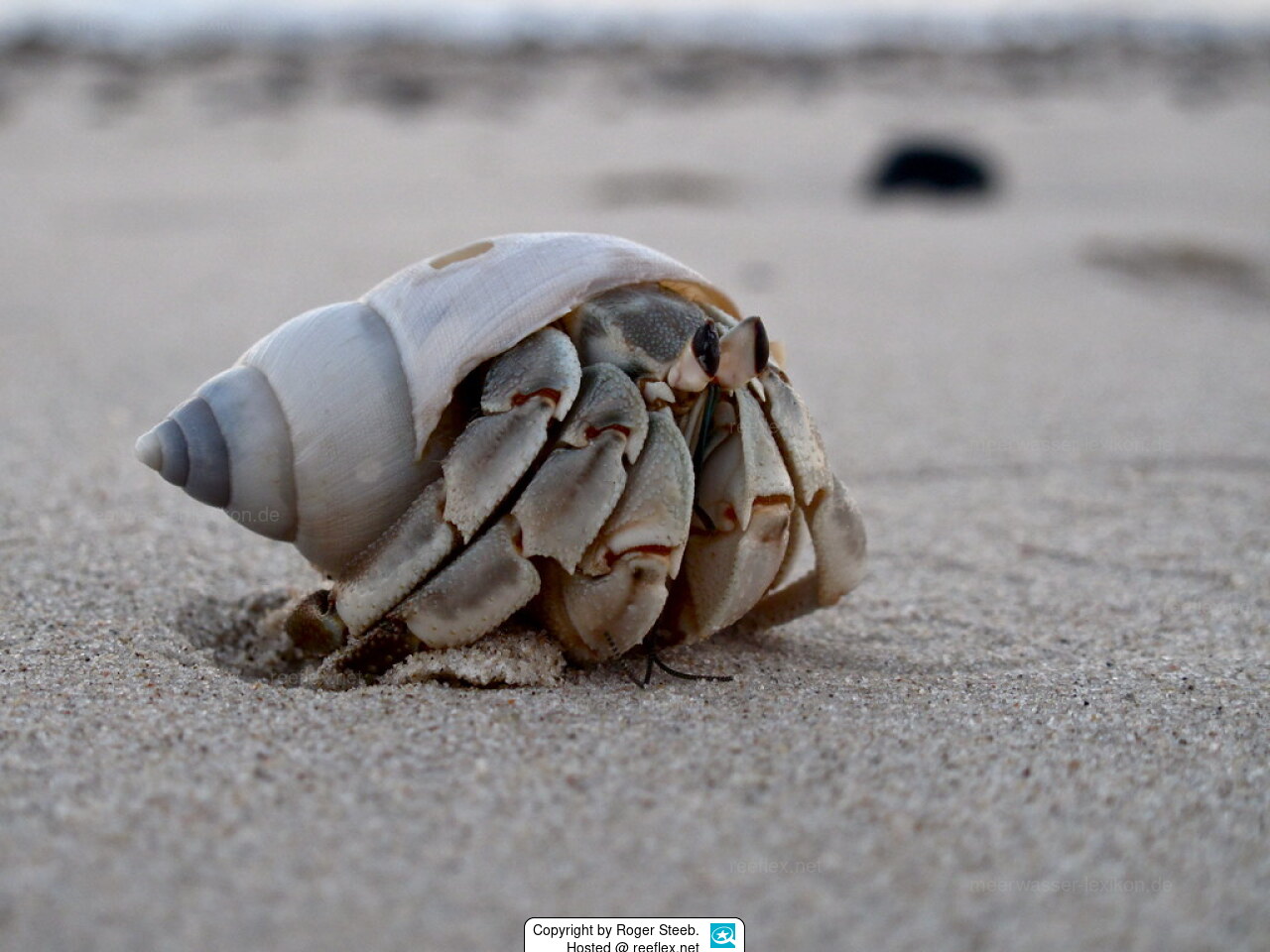Info
Coenobita compressus H. Milne Edwards, 1837
Terrestrial hermit crabs (Coenobitidae) are adapted to life on land up to the larval stage. They live in tropical regions mostly near the beach.
Coenobita compressus is one of the smallest members of its genus. It is quite variable in color and can be light (yellow, dark gray or orange), but most commonly they are brown. Sometimes Coenobita compressus has a blue or green tint on the body or the inside of its legs. These hermits have comma-shaped eyes, in contrast to Coenobita clypeatus, which has point-shaped eyes. When choosing a case, they tend to prefer cases with a wide and round opening.
Native to the Americas, these hermit crabs live along the Pacific coast from Mexico to Chile and typically congregate near tide pools and in flood zones. Their bodies have adapted to life on the coast and in captivity they need access to seawater as they need to metabolize and bathe in the salt it contains to maintain gill hydration. Failure to access seawater (real or artificial) results in death.
Like most hermit crabs, they are omnivores and scavengers, eating algae, dead fish, and other debris that washes up on shore.
Overall, hermit crabs were once considered “disposable pets” that lived for only a few months. However, it is known that Ecuadorian land hermit crabs can live over 30 years. In general, hermit crabs are social animals that do best in groups. They also need a temperature and humidity controlled environment (ideally around 80% humidity or more and 25-30°C) and enough substrate to allow them to burrow during moulting.
Synonymised names:
Cenobita compressa H. Milne Edwards, 1837 · unaccepted > misspelling (misspelling of genus name)
Cenobita intermedia Streets, 1871 · unaccepted > junior subjective synonym
Cenobita panamensis Streets, 1871 · unaccepted > junior subjective synonym
Direct children (1):
Variety Coenobita compressus var. Jousseaumei Bouvier, 1892 accepted as Coenobita scaevola (Forskål, 1775) (unaccepted > junior subjective synonym)
Terrestrial hermit crabs (Coenobitidae) are adapted to life on land up to the larval stage. They live in tropical regions mostly near the beach.
Coenobita compressus is one of the smallest members of its genus. It is quite variable in color and can be light (yellow, dark gray or orange), but most commonly they are brown. Sometimes Coenobita compressus has a blue or green tint on the body or the inside of its legs. These hermits have comma-shaped eyes, in contrast to Coenobita clypeatus, which has point-shaped eyes. When choosing a case, they tend to prefer cases with a wide and round opening.
Native to the Americas, these hermit crabs live along the Pacific coast from Mexico to Chile and typically congregate near tide pools and in flood zones. Their bodies have adapted to life on the coast and in captivity they need access to seawater as they need to metabolize and bathe in the salt it contains to maintain gill hydration. Failure to access seawater (real or artificial) results in death.
Like most hermit crabs, they are omnivores and scavengers, eating algae, dead fish, and other debris that washes up on shore.
Overall, hermit crabs were once considered “disposable pets” that lived for only a few months. However, it is known that Ecuadorian land hermit crabs can live over 30 years. In general, hermit crabs are social animals that do best in groups. They also need a temperature and humidity controlled environment (ideally around 80% humidity or more and 25-30°C) and enough substrate to allow them to burrow during moulting.
Synonymised names:
Cenobita compressa H. Milne Edwards, 1837 · unaccepted > misspelling (misspelling of genus name)
Cenobita intermedia Streets, 1871 · unaccepted > junior subjective synonym
Cenobita panamensis Streets, 1871 · unaccepted > junior subjective synonym
Direct children (1):
Variety Coenobita compressus var. Jousseaumei Bouvier, 1892 accepted as Coenobita scaevola (Forskål, 1775) (unaccepted > junior subjective synonym)







 Roger Steeb, USA
Roger Steeb, USA












